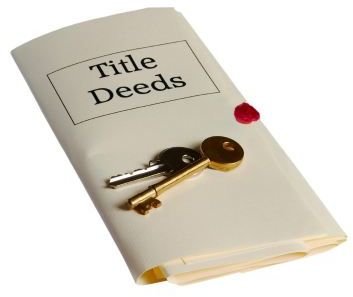How to Remove a Deceased Person From a Property Deed
Ownership Status Matters
When you are trying to determine how to remove a deceased person from a property deed, you need to know how the deed has been registered. There are several types of property ownership and each has slightly different requirements. Here are the most common types of property ownership:
Sole - When only one person owns the property
Joint Tenancy - Where more than one person owns the property equally. Rights are transferred to the surviving tenants equally. (important note: not all states recognize joint tenancy. Most now recognize rights of survivorship instead).
Rights of Survivorship - When more than one person owns a property and upon their death the property is owned by the survivors. (note that this is the same as joint tenancy)
Tenants in Common - When there is more than one owner on a property. The distinction under tenancy in common is that ownership percentages need not be equal and upon the death of one tenant, the property passes to their heirs.
Tenancy by Entirety - Tenancy by entirety is nearly always applied only to spousal ownership. In this instance, neither tenant may make property changes automatically without the consent of the other. In the case that one tenant is deceased, the surviving owner is the full owner of the property.
Deed Types
To make sure that you use the proper forms when you are deciding how to remove a deceased person from a property deed, you must know the various deed types. Each has a slightly different definition and this will determine if the property is transferred properly. Each will also show different results if a title search is run.
Quit Claim Deed - A quit claim deed means that you are conveying the title to the property and guaranteeing that you have the right to transfer the title. The title is transferred to the new owner with no promise that it is “clear and unencumbered from other claims” of ownership. In the majority of cases, a quit claim deed is appropriate.
Warranty Deed - A warranty deed is used when a title is conveyed to another owner with the guarantee that no other person has the right to claim ownership of the property.
Transferring on Death
When one (or more) tenants who own a property is deceased, the property must be transferred to the living owners. In the case of joint tenancy, this is typically done through the clerk of courts or registrar of deeds and can vary from state to state. Except for cases where a probate order is in place, (for example, the single owner of a property is deceased) the following documents must be filed to change the deed:
A) Death Certificate - The surviving owners of the property will be required to submit a certified death certificate proving that a person who owns the property is deceased;
B) Affidavit of Ownership - If there were more than two (2) owners besides the decedent, you may be required to file an affidavit of ownership. Check with your local authorities for additional detail.
C) New Deed - A new deed that is signed and notarized by all new owners of the property.
These documents must then be filed with the appropriate authority. In some states, this will mean a clerk of courts while in most states it will be a registrar of deeds.
Summary
Maintaining a file of important papers will allow you to keep track of all potential items that must be transferred on the death of a spouse or loved one. Understanding how to remove a deceased person from a deed is important if you are a surviving owner. If you are uncertain of the rules and regulations as they apply to your individual state, it is a good idea to contact an attorney who specializes in real estate transactions.
Source:
- Legal Web Review - https://www.legalwebreview.com/claim/free-quick-claim-deed-form/
Image credit:
- Deed to property purchased from istockphoto.com/MacphersonPhoto
